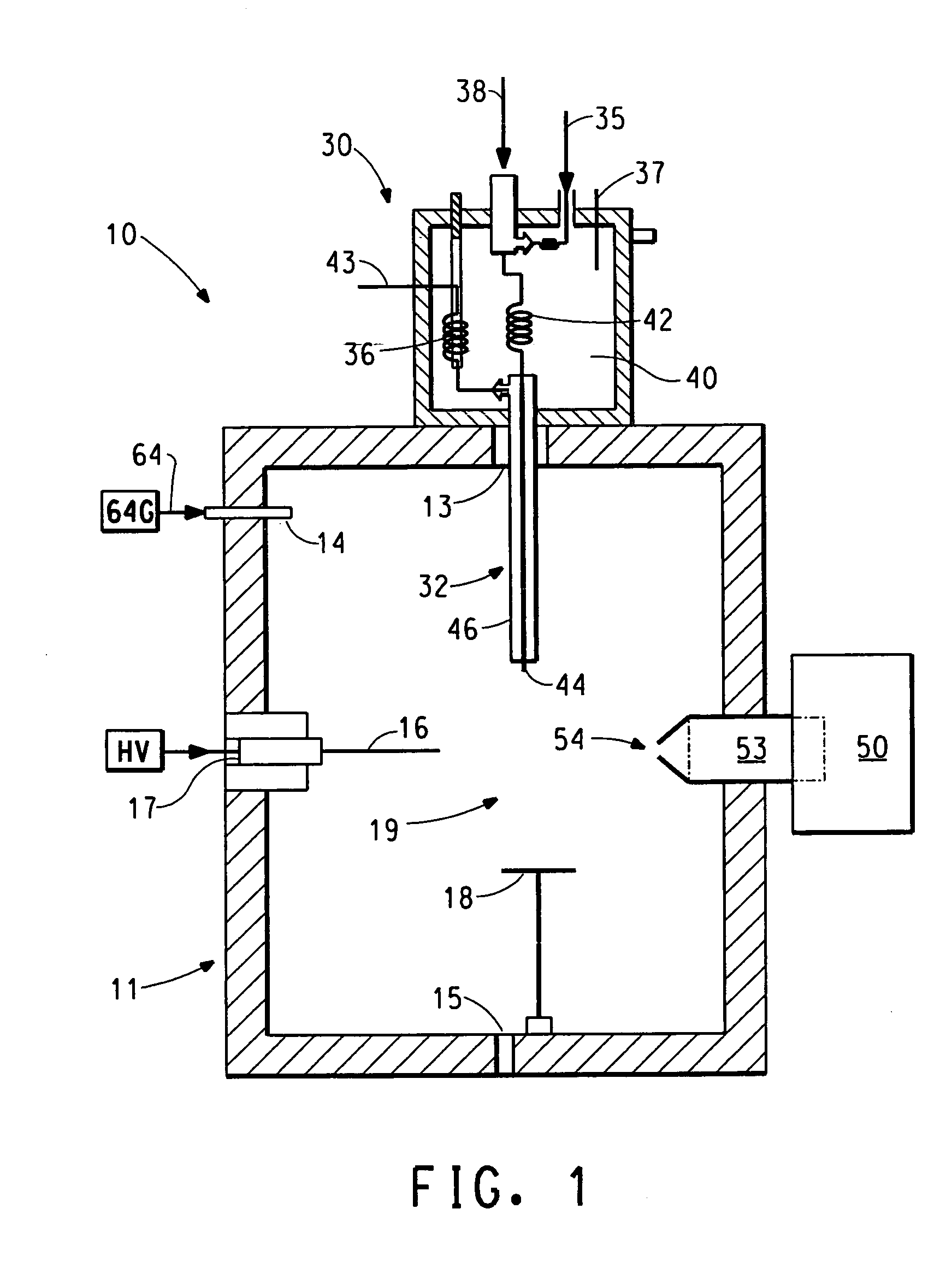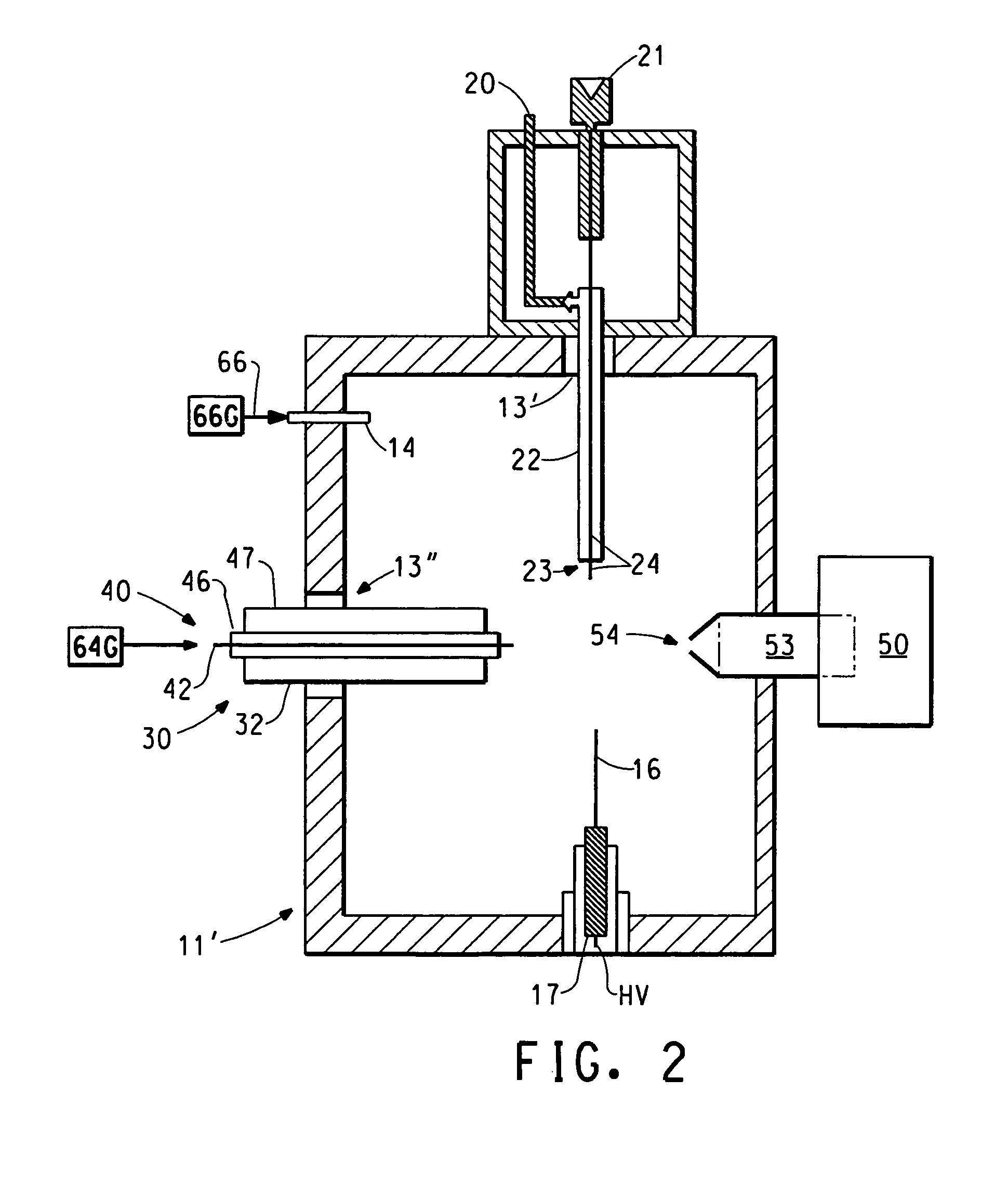Ion source for a mass spectrometer
a mass spectrometer and atmospheric pressure ionization technology, applied in the direction of particle separator tube details, dispersed particle separation, separation process, etc., can solve the problems of lack of flexibility of atmospheric pressure ionization mass spectrometers (apims), time-consuming, and requires breaking vacuum, so as to achieve high chromatographic resolution, facilitate rapid switching, and maintain chromatographic resolution
- Summary
- Abstract
- Description
- Claims
- Application Information
AI Technical Summary
Benefits of technology
Problems solved by technology
Method used
Image
Examples
Embodiment Construction
[0039]Throughout the following detailed description similar reference numerals refer to similar elements in all figures of the drawings.
[0040]Alternate embodiments of the present invention of interfacing a gas chromatograph (GC) to an atmospheric pressure liquid chromatograph / mass spectrometer (AP-LC / MS) instrument are shown in FIGS. 1, 2 and 3. FIG. 4 shows a sectional view, in greater detail, of the interface tube of FIG. 1, 2 or 3.
[0041]FIG. 1 shows an atmospheric pressure ionization source 10 comprising an enclosure or housing 11, for receiving a gas chromatography probe 30 and for interfacing an associated gas chromatograph oven 40 to an associated mass spectrometer 50. The enclosure 11 has an outlet aperture 54 for introducing ions into a vacuum region 53 of the mass spectrometer 50. The outlet aperture 54 communicates directly and merges into the entrance aperture (also known as a skimmer aperture) of the mass spectrometer 50. FIG. 2 shows an enclosure 11′ that has a port 13′...
PUM
 Login to View More
Login to View More Abstract
Description
Claims
Application Information
 Login to View More
Login to View More - R&D
- Intellectual Property
- Life Sciences
- Materials
- Tech Scout
- Unparalleled Data Quality
- Higher Quality Content
- 60% Fewer Hallucinations
Browse by: Latest US Patents, China's latest patents, Technical Efficacy Thesaurus, Application Domain, Technology Topic, Popular Technical Reports.
© 2025 PatSnap. All rights reserved.Legal|Privacy policy|Modern Slavery Act Transparency Statement|Sitemap|About US| Contact US: help@patsnap.com



